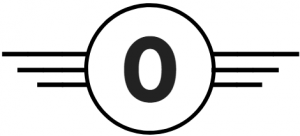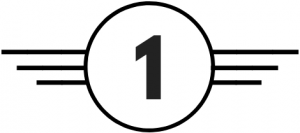Drones, according to the last regulatory proposal published by EASA (NPA-A, 2017) and ratified in the Official Opinion published this year by this European Entity, are also suitable for testing to intent the CE Mark, as a mandatory requirement in a similar manner to other industries and sectors.
In an early stage, this CE Mark is proposed for vehicles and related systems (on ground and on board), under the open category, according the official operational categorization, but is reasonable to consider that this scope will be extended to the specific and certified category (for obvious reasons).
Coming back to the mentioned proposal, the main question is:
Should I certify my drone through this CE mark?
… By now, as long as this proposal is not official, is not a mandatory statement yet. But is totally recommended to be prepared for the nearby future. This is why we will comment some important aspects to take into account for your drone certification.
Article 14 indicates the General principles of the CE marking, and highlights that
The CE marking and, when relevant, the UA class identification label, shall be affixed visibly, legibly and indelibly to the product, unless that is not possible or not warranted on account of the nature of the product. The CE marking and the UA class identification label shall also be affixed visibly and legibly to the packaging and to the user’s manual.
The UA Class identification label?
When is time to fly a drone, the pilot should take into account the drone class. These classes represent the minimum features that our drone should have. For this reason, EASA considered the inclusion of these labels as a good option to differentiate the essential drones’ capabilities.
According to EASA these class labels are:

- “Maximun Take-Off Weight” (MTOW), including payload, of less than 250 g; Be safely controllable by a remote pilot following the manufacturer’s instructions;
- Have a maximum speed in level flight of 19 m/s;
- Have a maximum attainable height above the take-off point limited to 120 m or be equipped with a system that limits the height above the surface or above the take-off point to 120 m;
- If powered by electricity, the nominal voltage shall not exceed 24 V direct current (DC) or the equivalent alternating current (AC) voltage…

- Be made of materials and have performance and physical characteristics such as to ensure that in the event of an impact at terminal velocity with a human head, the energy transmitted to the human head is less than 80 J, or, as an alternative, the UAS shall have an “Maximun Take-Off Weight” (MTOM), including payload, of less than 900 g;
- Have a maximum speed in level flight of 19 m/s;
- have a maximum attainable height above the take-off point limited to 120 m or be equipped with a system that limits the height above the surface or above the take-off point to a value selectable by the remote pilot; in the latter case, clear information about the height of the UA above the surface or take-off point during flight shall be provided to the remote pilot;
- If powered by electricity, the nominal voltage shall not exceed 24 V direct current (DC) or the equivalent alternating current (AC) voltage…

- Have an “Maximun Take-Off Weight” (MTOM), including payload, of less than 4 kg;
- Be designed and manufactured in such a way as to fly safely, and will be safely controllable by a pilot following the manufacturer’s instructions;
- Have a maximum attainable height above the take-off point limited to 120 m or be equipped with a system that limits the height above the surface or above the take-off point to a value selectable by the remote pilot; in the latter case, clear information about the height of the UA above the surface or take-off point during flight shall be provided to the remote pilot;
- If powered by electricity, the nominal voltage shall not exceed 48 V DC or the equivalent AC voltage; its accessible parts shall not exceed 48 V DC or the equivalent AC voltage; internal voltages shall not exceed 48 V DC or the equivalent AC voltage unless it is ensured that the voltage and current combination generated does not lead to any risk or harmful electric shock even when the UAS is damaged
 Have an “Maximun Take-Off Weight” (MTOM), including payload, of less than 25 kg;
Have an “Maximun Take-Off Weight” (MTOM), including payload, of less than 25 kg;- Be designed and manufactured in such a way as to fly safely, and will be safely controllable by a pilot following the manufacturer’s instructions;
- Have a maximum attainable height above the take-off point limited to 120 m or be equipped with a system that limits the height above the surface or above the take-off point to a value selectable by the remote pilot; in the latter case, clear information about the height of the UA above the surface or take-off point during flight shall be provided to the remote pilot;
- If powered by electricity, the nominal voltage shall not exceed 48 V DC or the equivalent AC voltage; its accessible parts shall not exceed 48 V DC or the equivalent AC voltage; internal voltages shall not exceed 48 V DC or the equivalent AC voltage unless it is ensured that the voltage and current combination generated does not lead to any risk or harmful electric shock even when the UAS is damaged
- Have an “Maximun Take-Off Weight” (MTOM), including payload, of less than 25 kg

- Be designed and manufactured in such a way as to fly safely, and will not be capable of automatic control modes;
- Be placed on the market with a user’s manual providing the characteristics of the UA (including but not limited to the mass of the UA and its “Maximun Take-Off Weight” (MTOM), including its payload, and a description of the behaviour of the UA in case of a loss of data link), clear operational instructions and operational limitations (including but not limited to meteorological conditions and day/night operations) as well as an appropriate description of all the risks related to UAS operations
These labels together with the CE marking for drones are the way to verify and validate the safety capabilities of a machine to comply the essential requirement promoted by the European Commission.
- Alter Technology, first Notified Body in Europe accredited to certify drones - 9th February 2022
- Q&A – Declaration of Conformity and CE Marking - 4th November 2020
- NEW ISO STANDARD for Drones Released! - 29th January 2020






